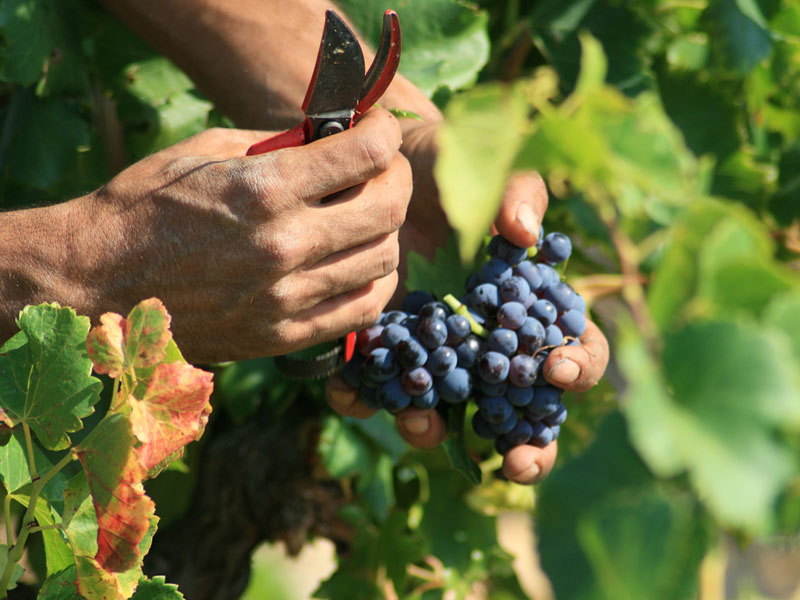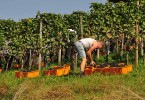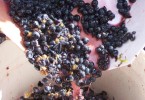The third phase of the grape harvest: alcoholic fermentation
After the phase of the picking and pressing, the important phase of the alcoholic fermentation take place..
What is it?
The fermentation is a chemical process where the grapes, previously picked and pressed make must, and then they become wine. In particular, what is essential is the transformation of sugars into ethyl alcohol (this is why it is called alcoholic fermentation) and carbon dioxide. This transformation is carried out by yeasts called saccaromicete, normally situated on the peel of the grape, in the vat or added. Sugar is transformed between alcohol and carbon dioxide. The alcoholic fermentation produces many other products that depends on the type of grapes and the conditions where the process of fermentation take place. These other products cause the organoleptic properties that distinguish a wine from the other.
Historical hints
Fermentation is a natural process, for this reason people think that the first transformation of the grapes through this process took place in a completely random way. Recently, in Iran, there have been discovered Archeological rests of containers with sediments of an alcoholic fermentation. This findings dated back to 5.100 BC, but some scholars believe that the first fermentation of the grapes arrives from 10.000 years ago. The first documents that talk about the production of wine arrives from the Egyptians, around 1500 BC, during the Roman Empire the wine has become a daily custom.
The colour of the wine
From the alcoholic fermentation of the wine depends the main organoleptic properties, but also the visual characteristics in particular the colour of the wine. To produce a white wine the must won’t contain the peels, because the colour is given mainly by them. This process is called “white vinification”.
As a consequence, the lack of peels cause a decrease of yeast responsible of the fermentation that will be slower than a fermentation of must with peels. In this phase, it is important that the temperature of the environment where the must is fermenting. To avoid that the elements that define the aroma of wine evaporate together with carbon dioxide, it is better to not exceed the 20 degrees. Temperatures below 16 degree, instead, can stop the process of fermentation.
For red wines the process is pretty different, first of all they have to rest in the must because the pigments and tannins are fundamental to fix the colour and the taste of the wine. The right temperature of the wine is between 25 and 30 degrees, in fact, these temperature are necessary to obtain the best results with reference both to the colour and the structure. Ross wines are obtained through the fermentation of the must with peels that tend to release few colour, or more commonly, dividing the peels from the must (generally from 4 to 12 hours).
Containers for the alcoholic fermentation

The traditional containers to allow an interaction between wine and the fermenter to define the desired characteristics. The best thing is to use containers realized with inert material, that they won’t affect the taste of the wine, like cement or more commonly inox steel. Above all in this last case the containers can be provided by system of thermoregulation to define quickly the fermenting temperature
Author of Immages: Jean-Louis Zimmermann, Samu73, flickr








